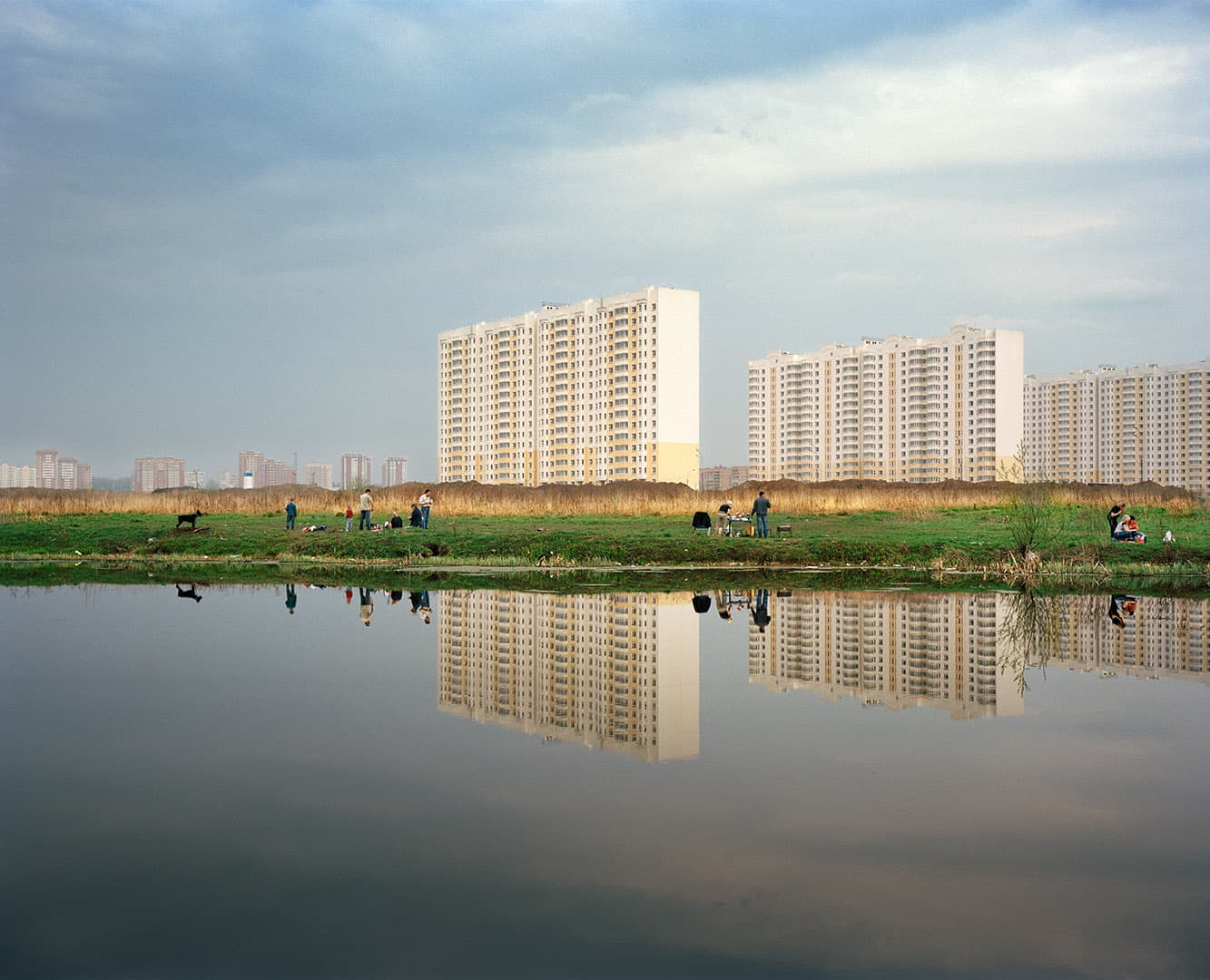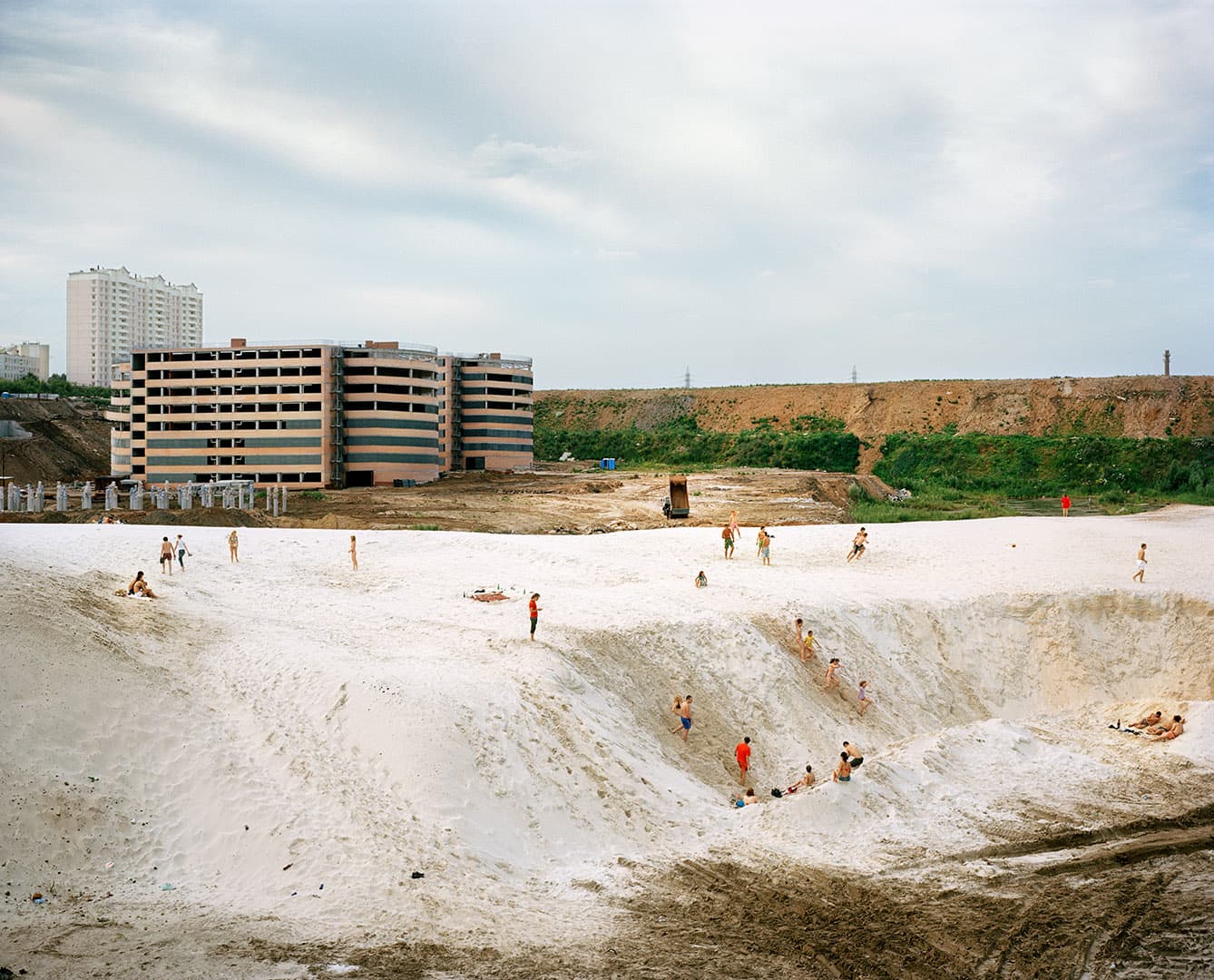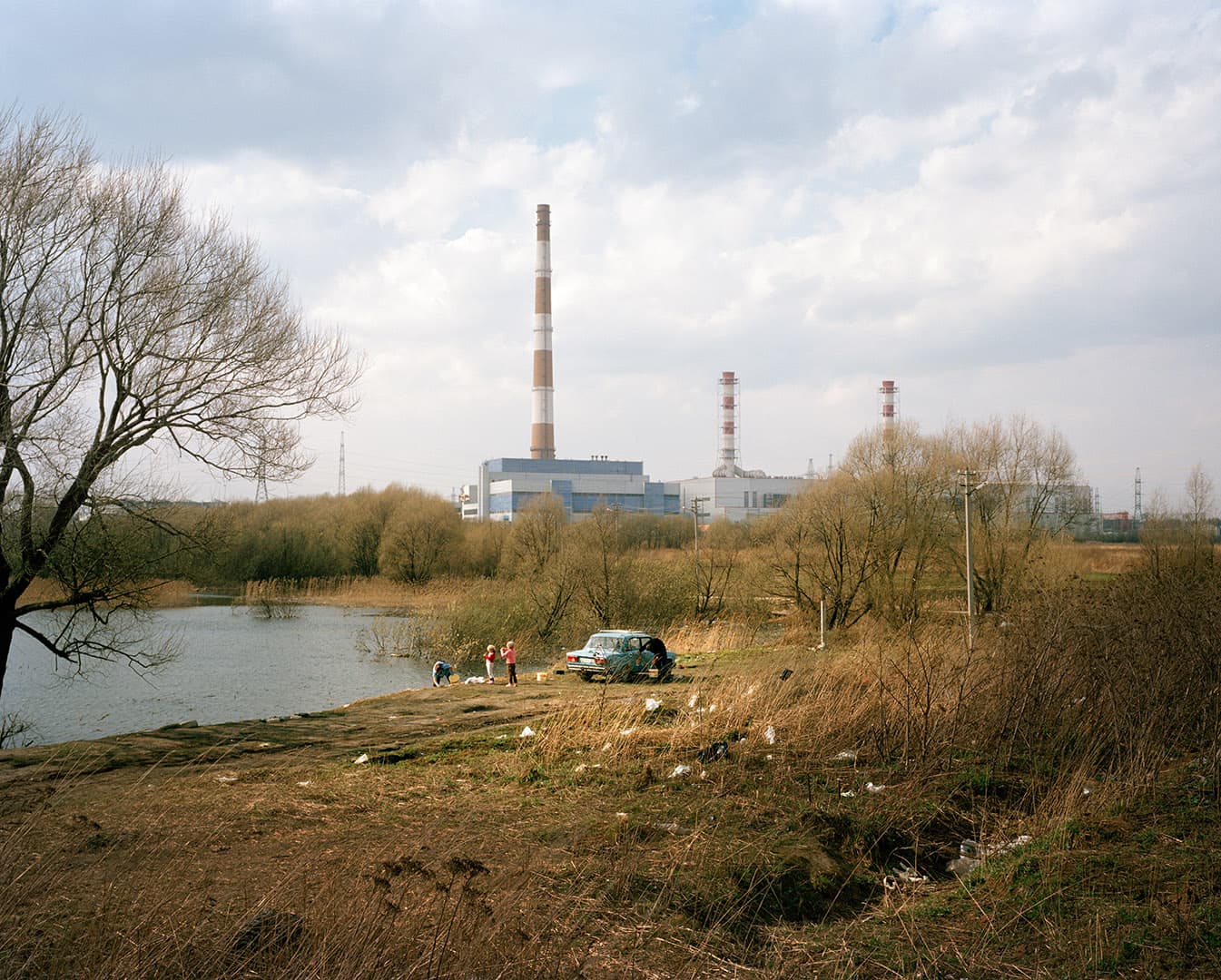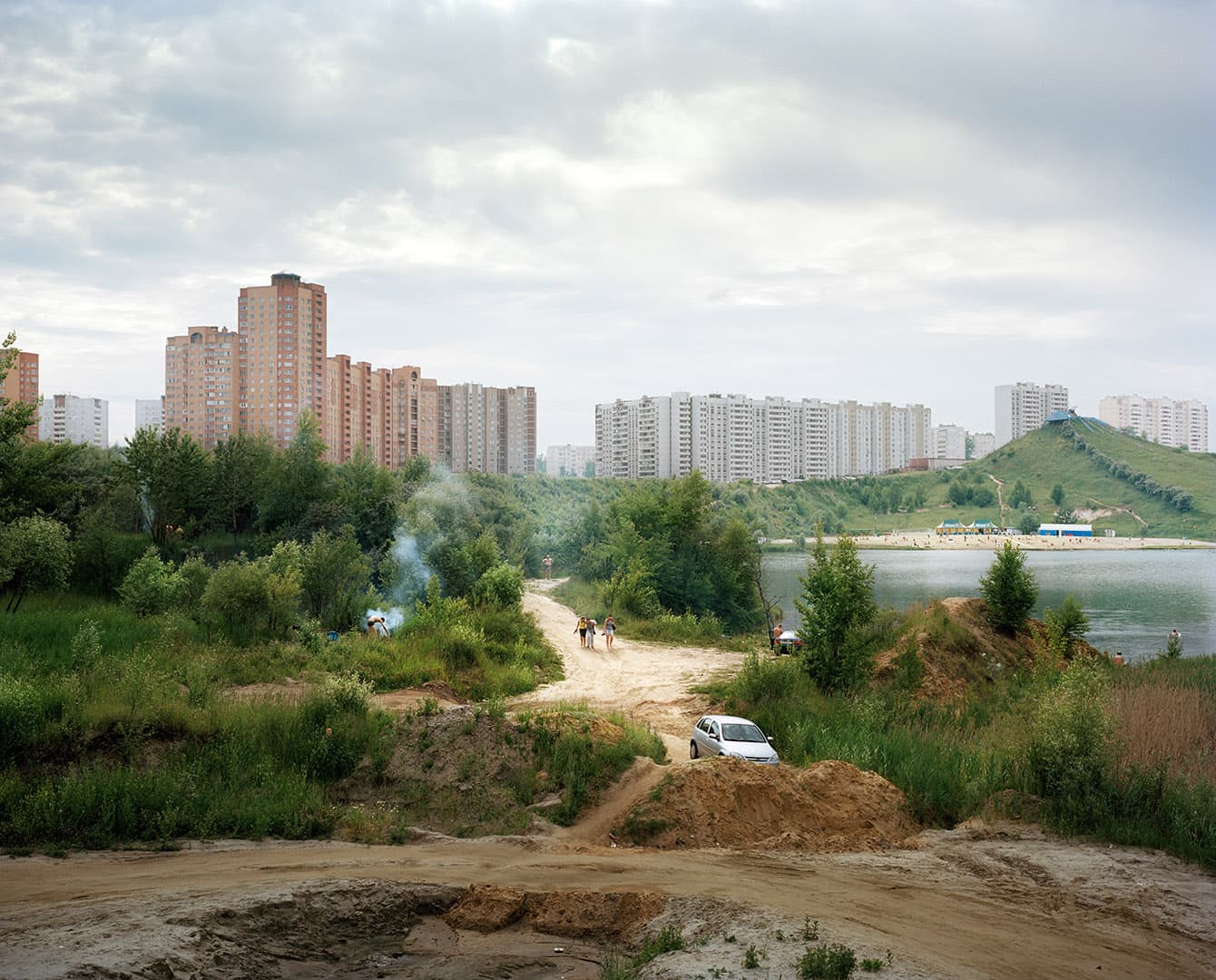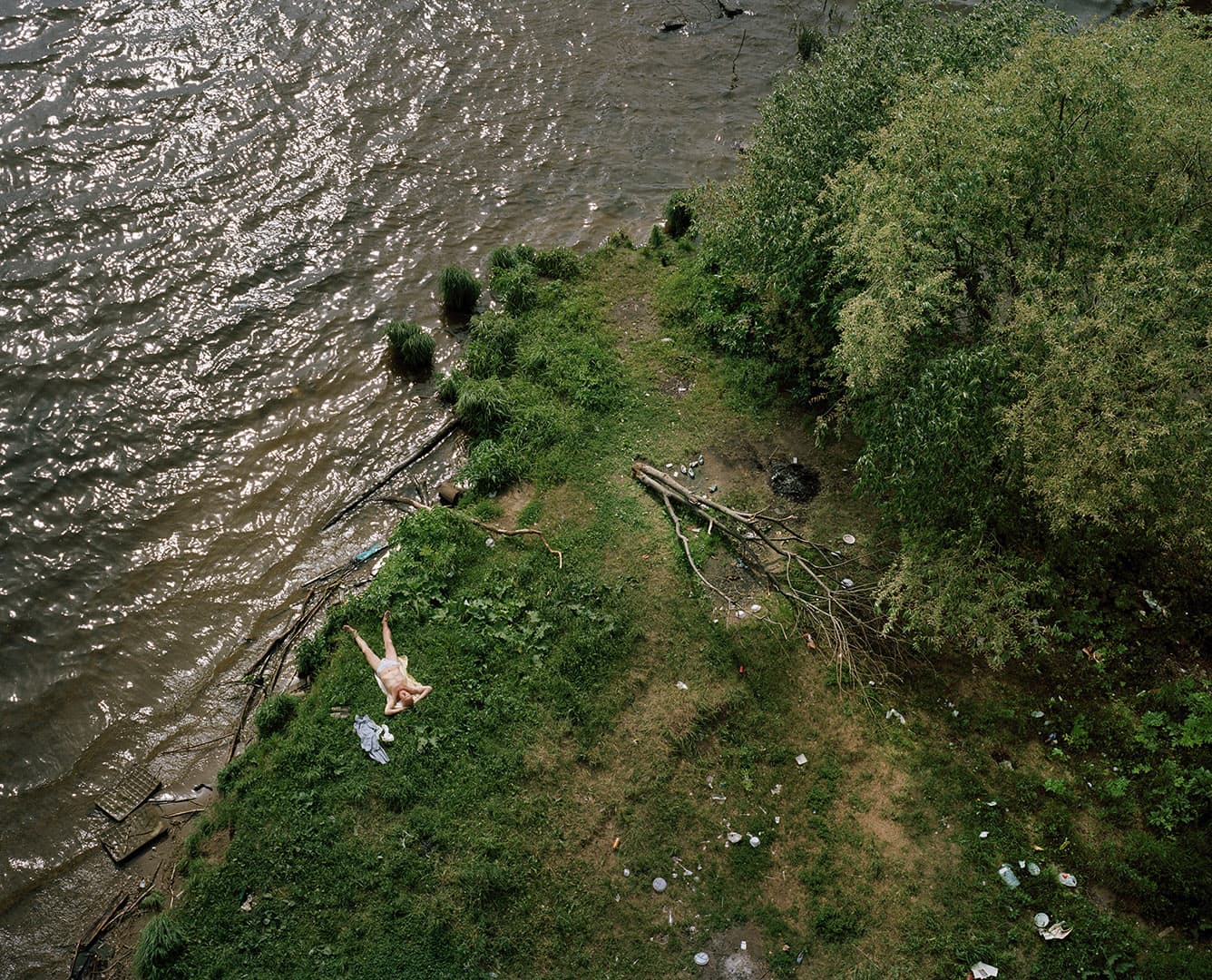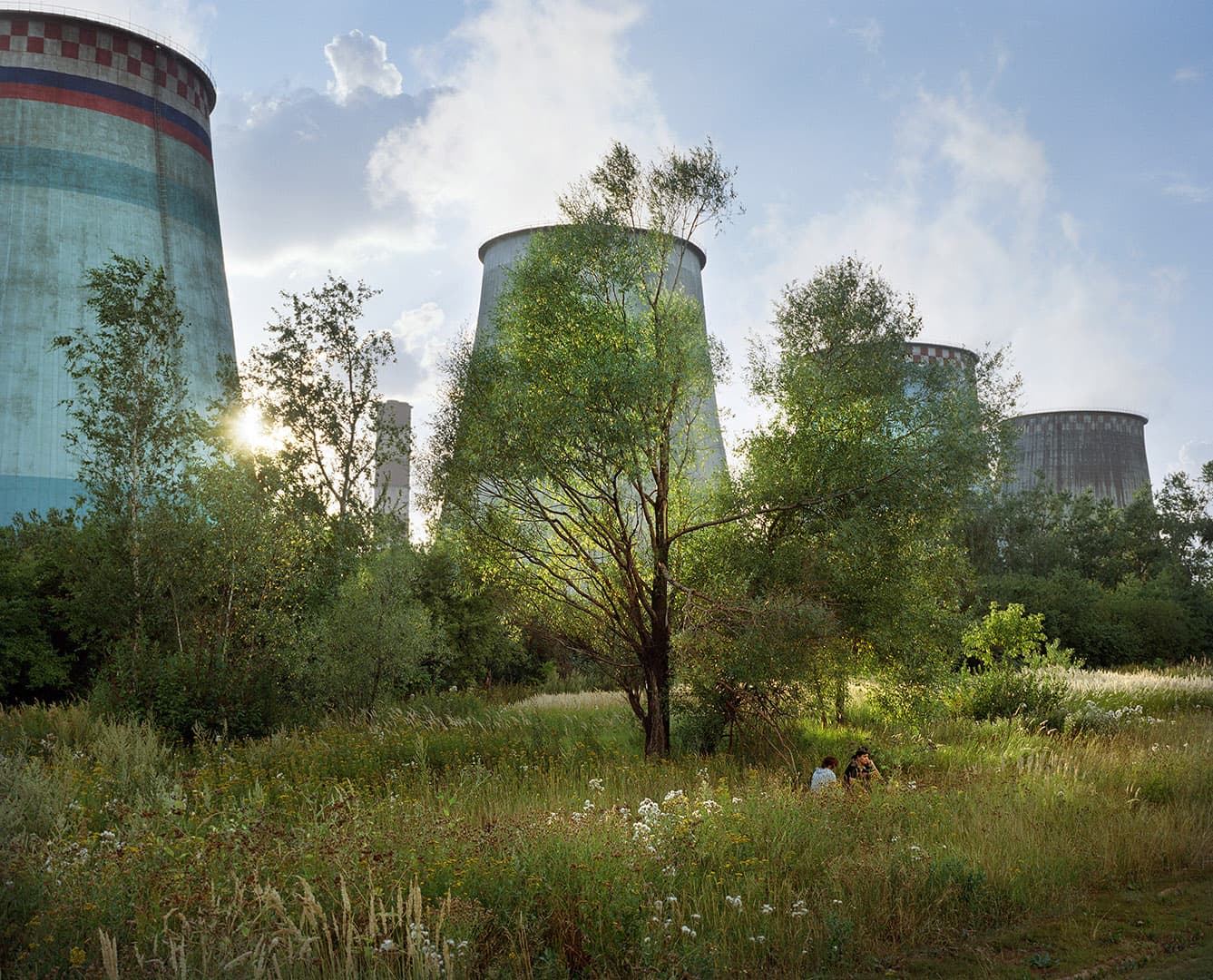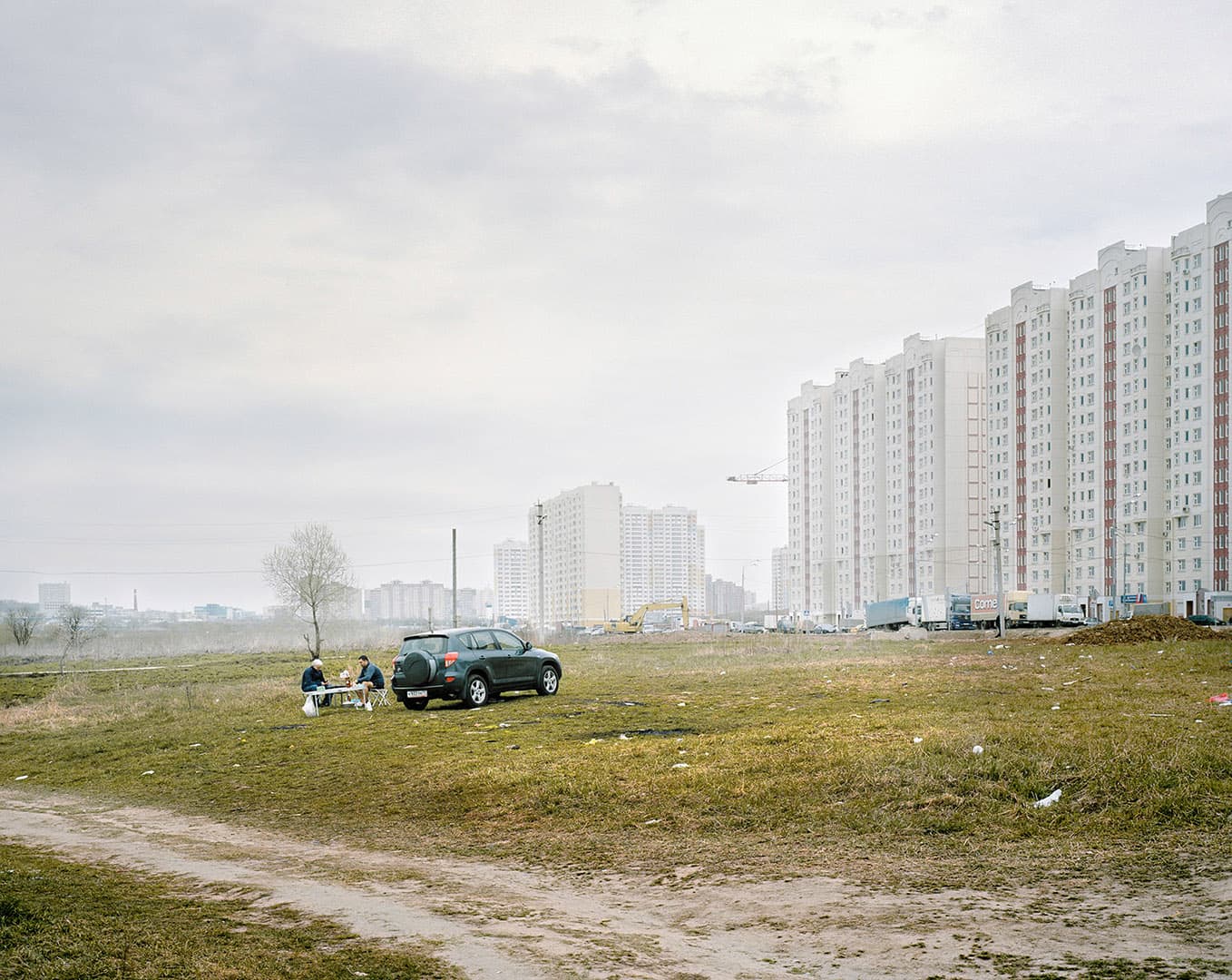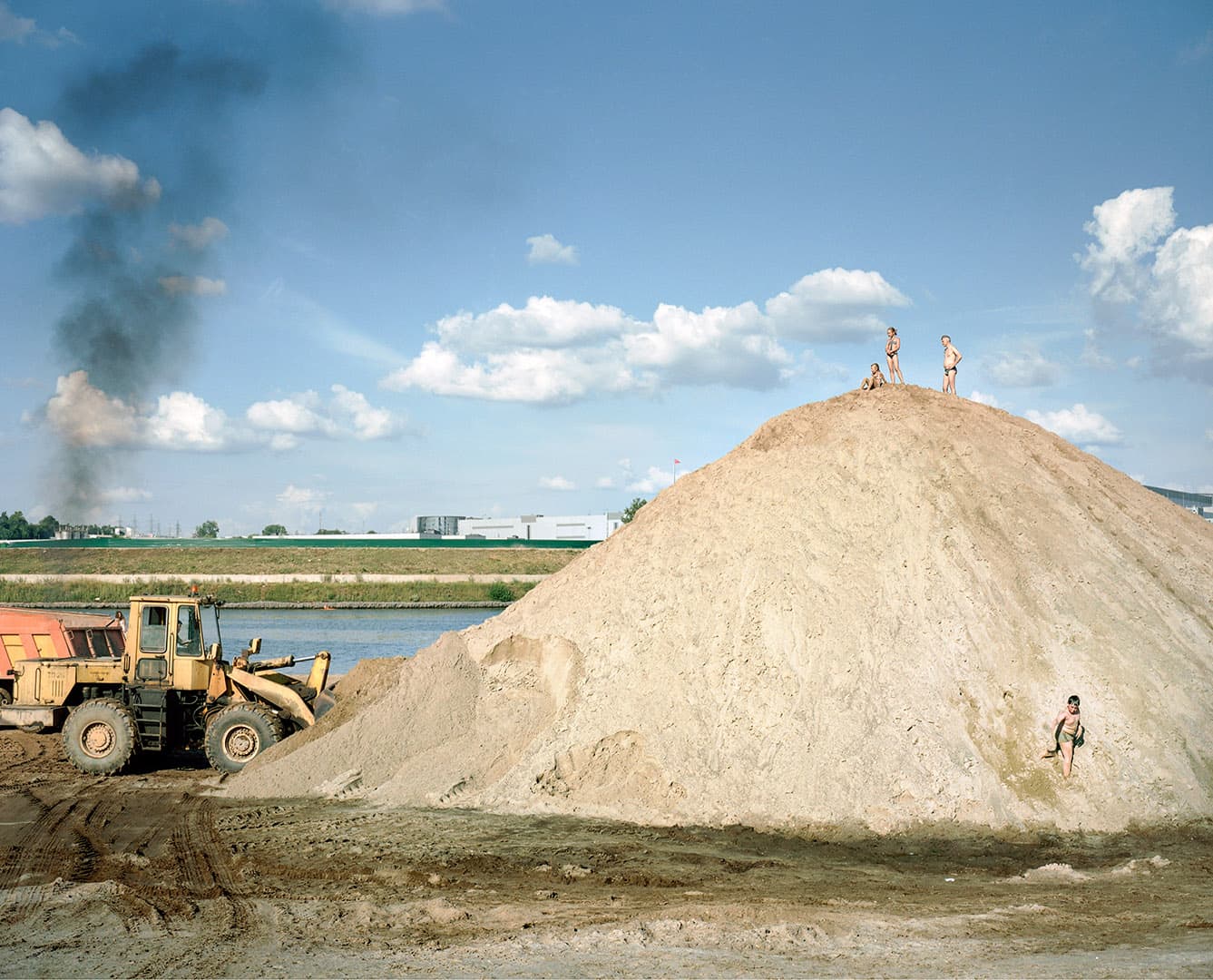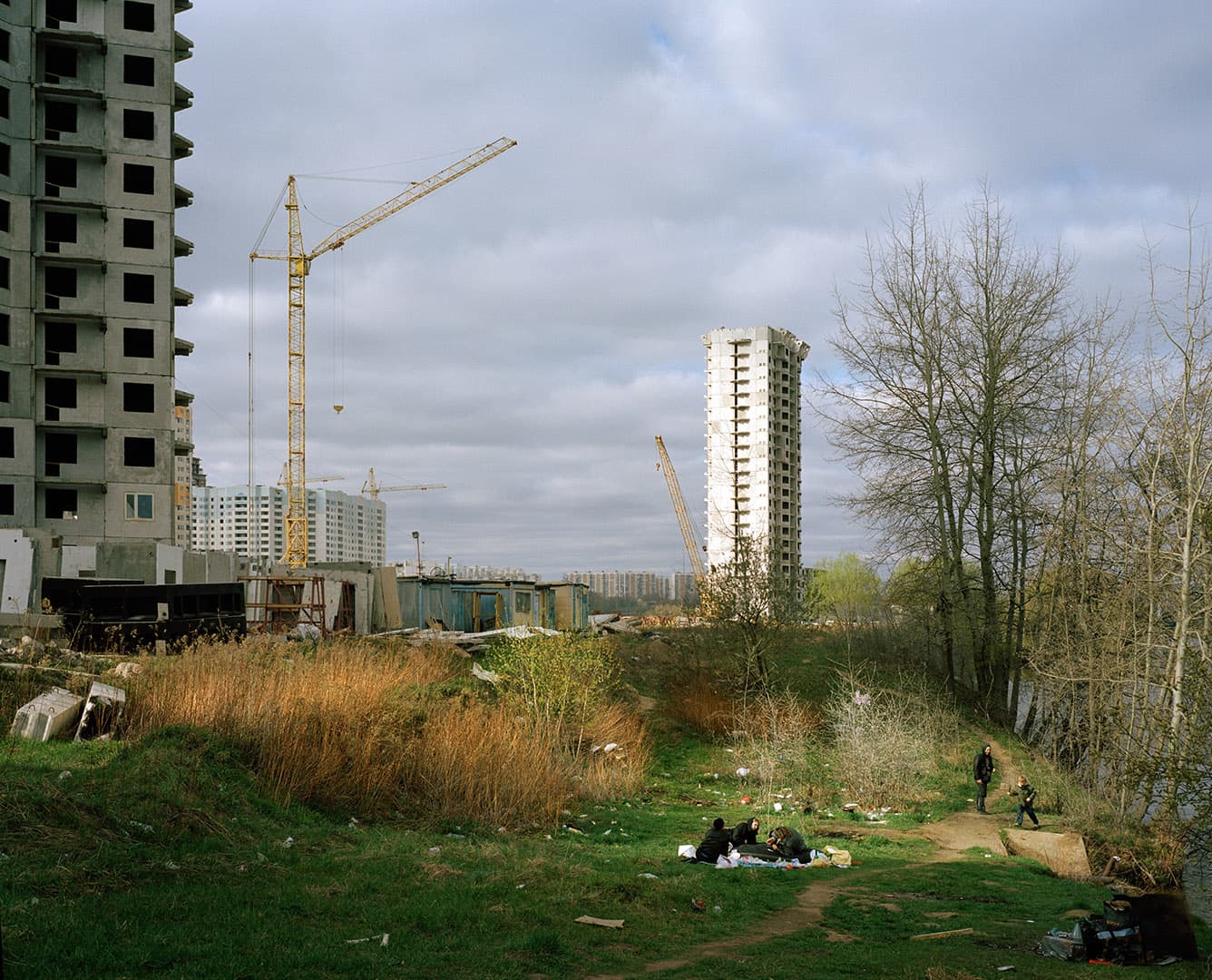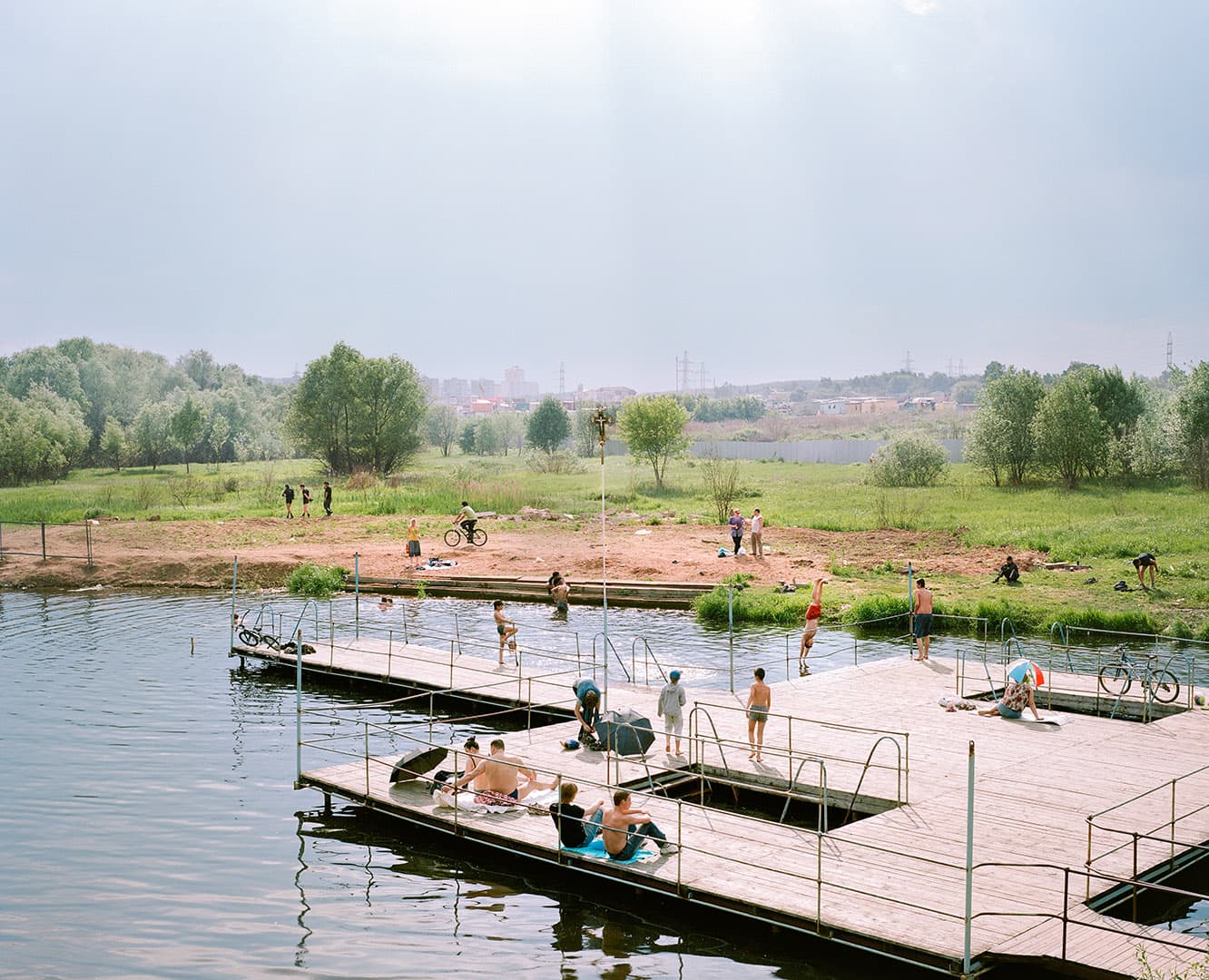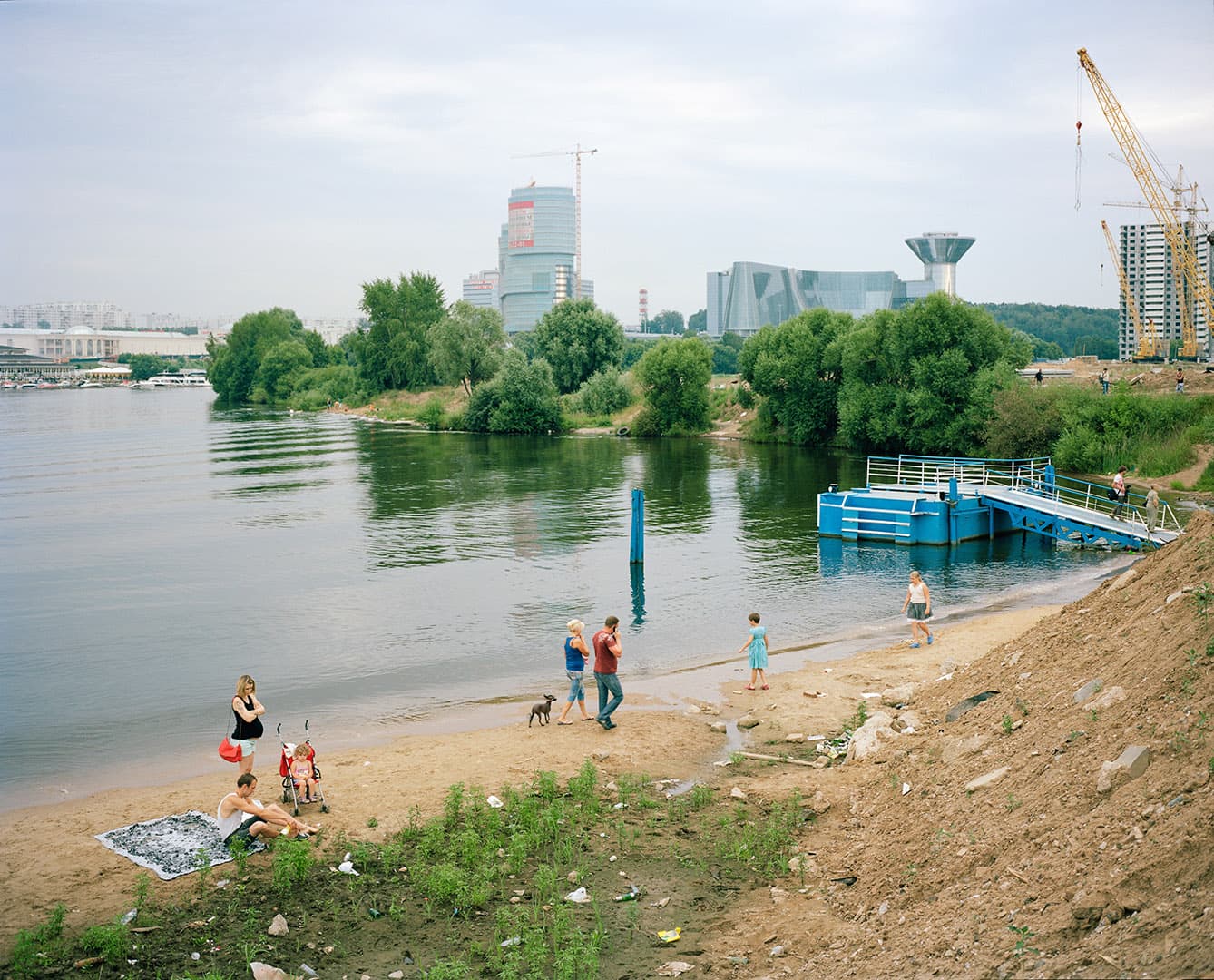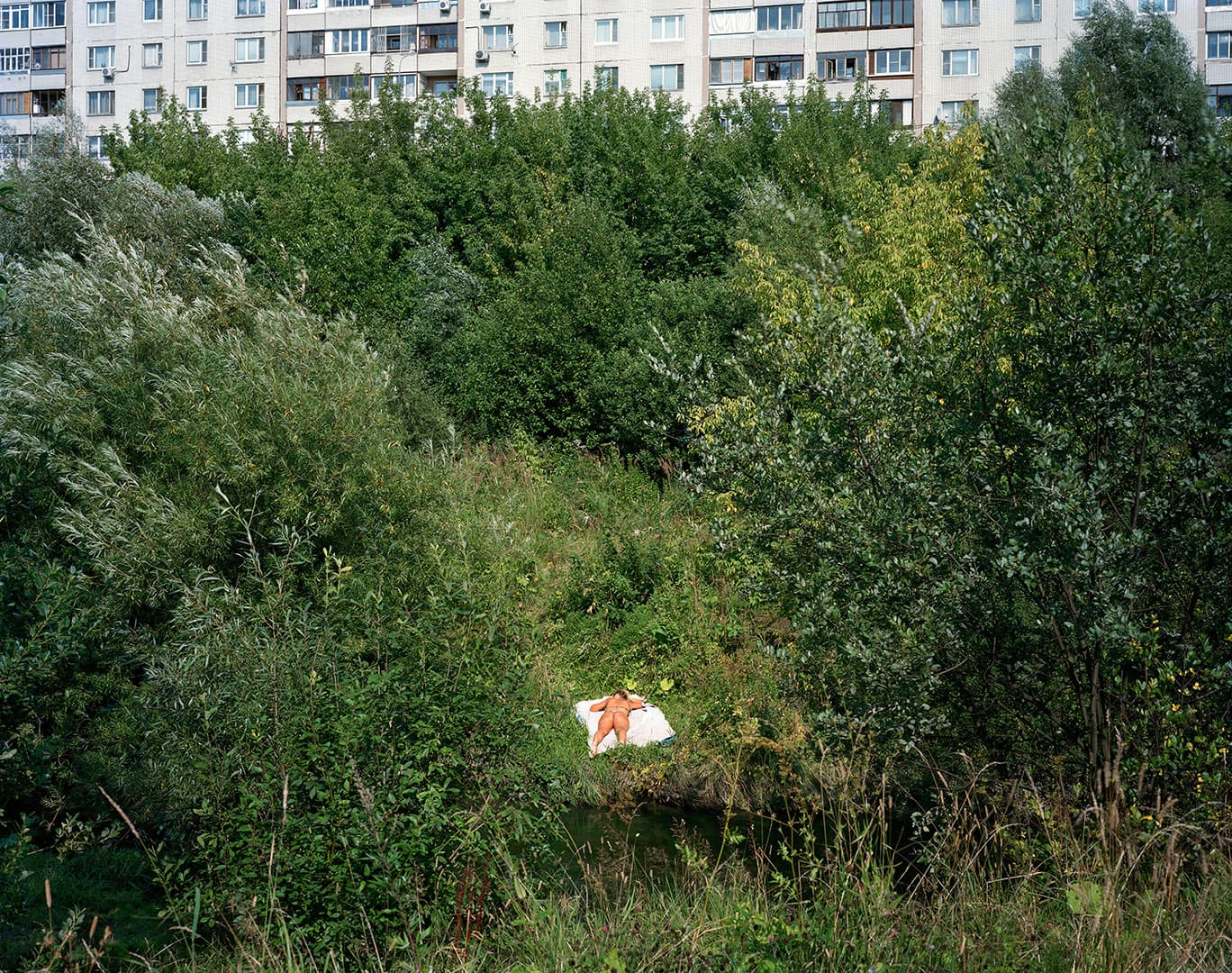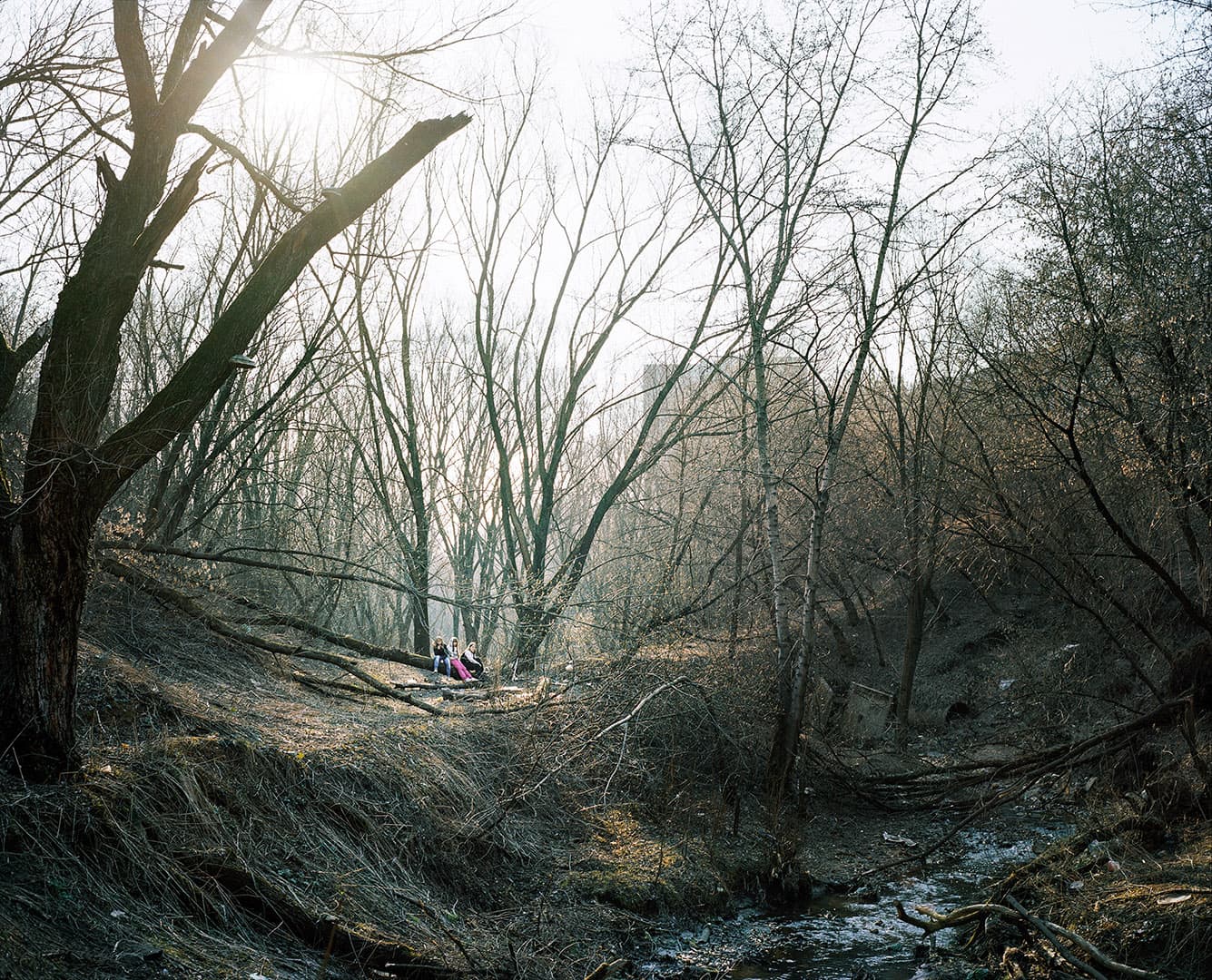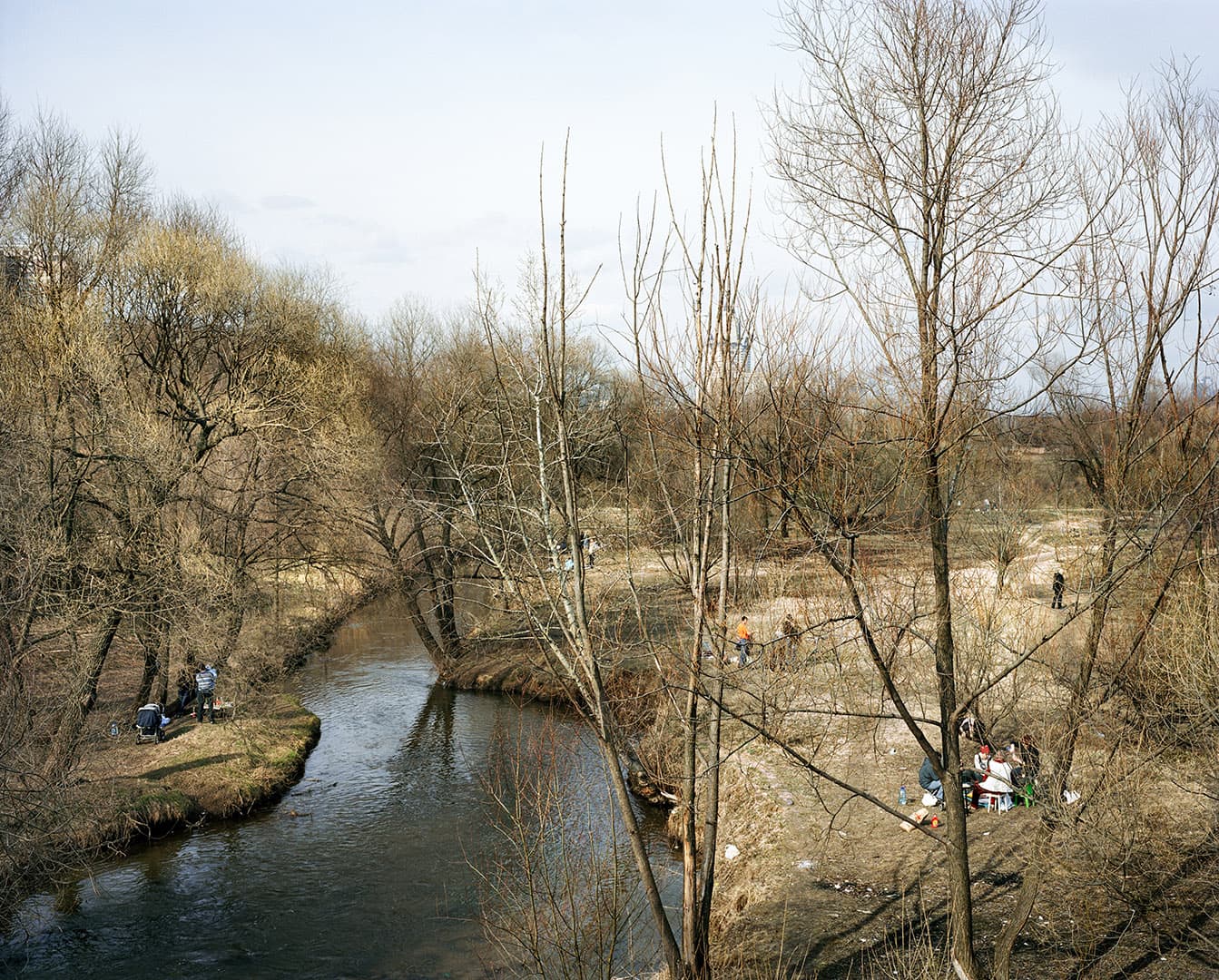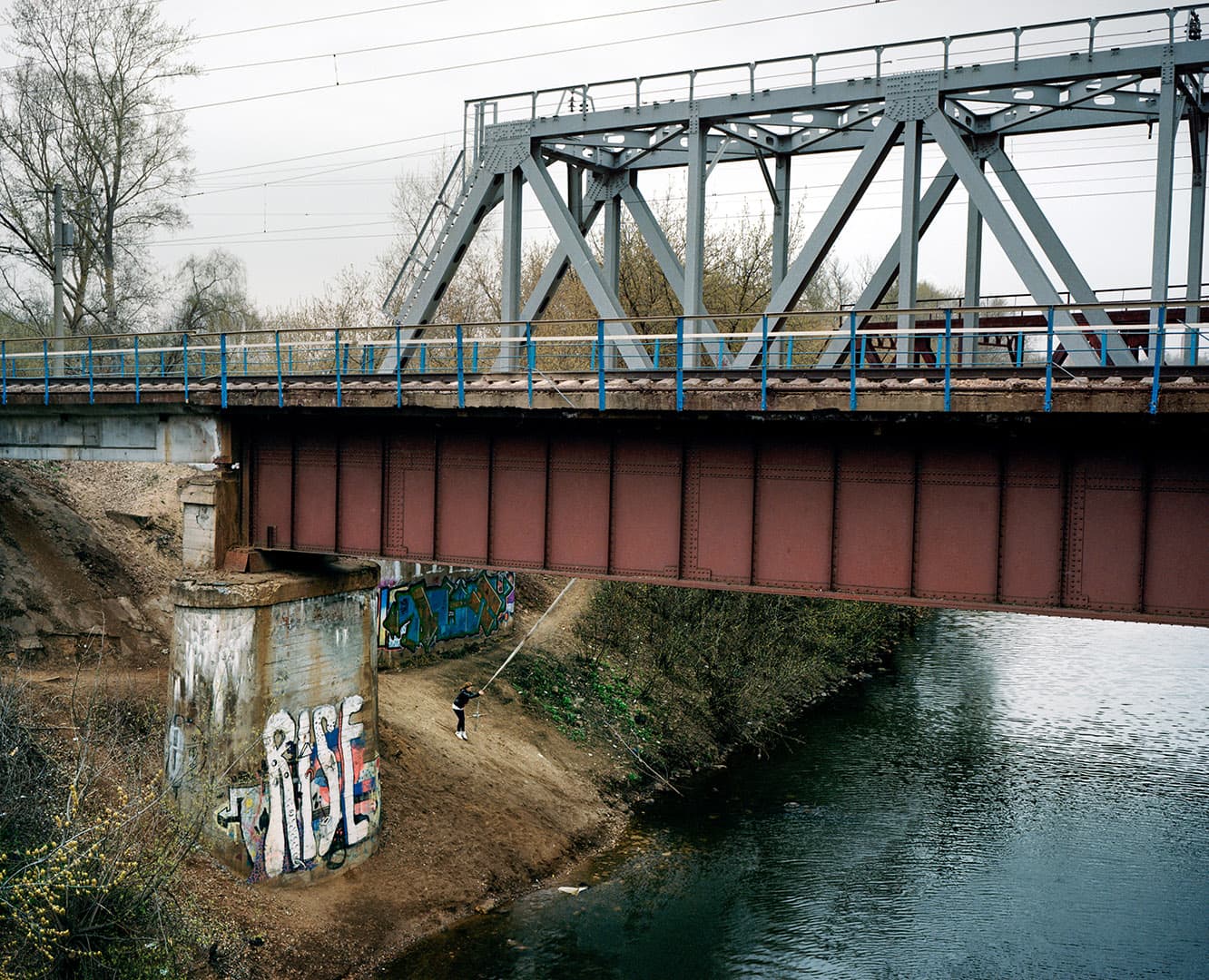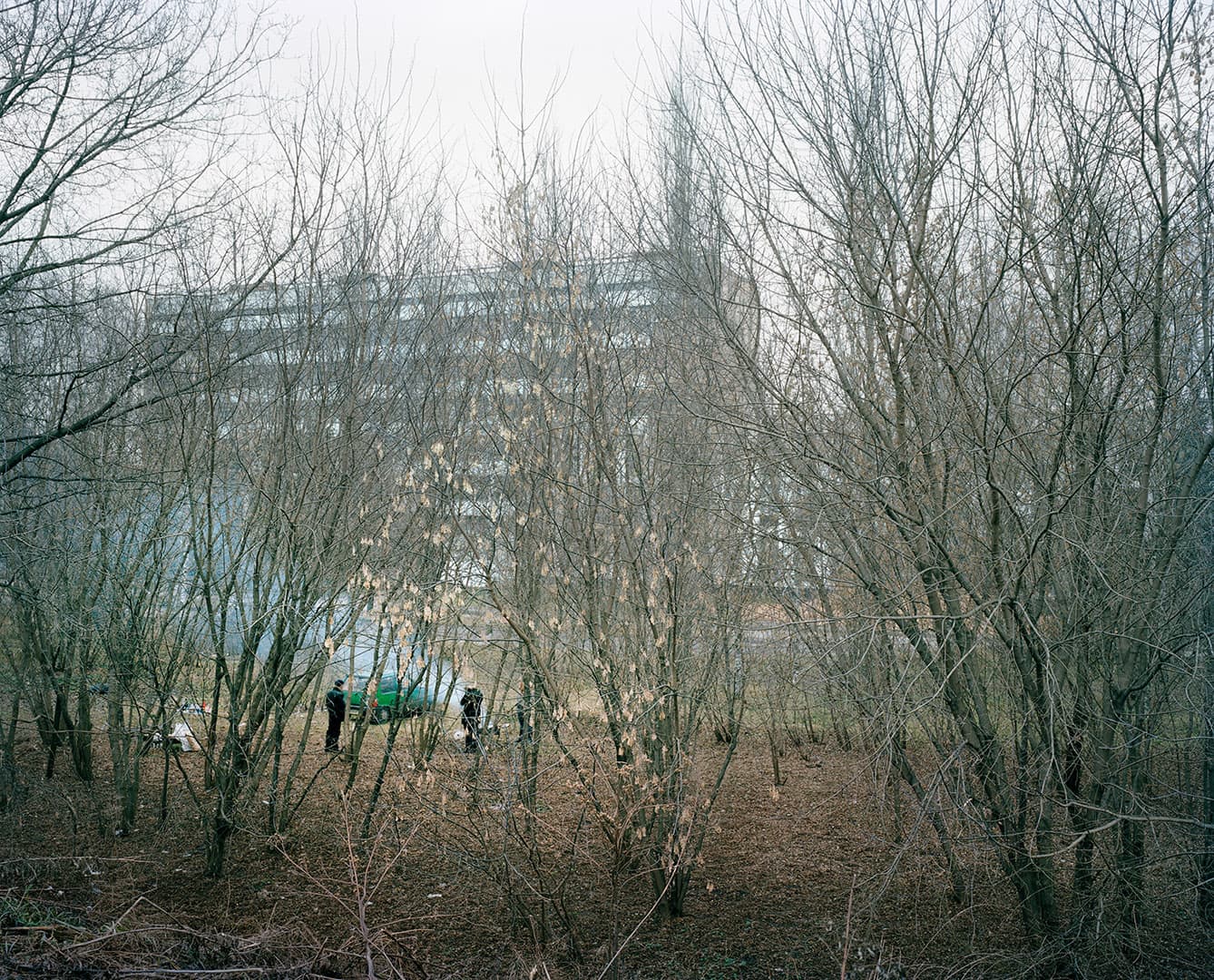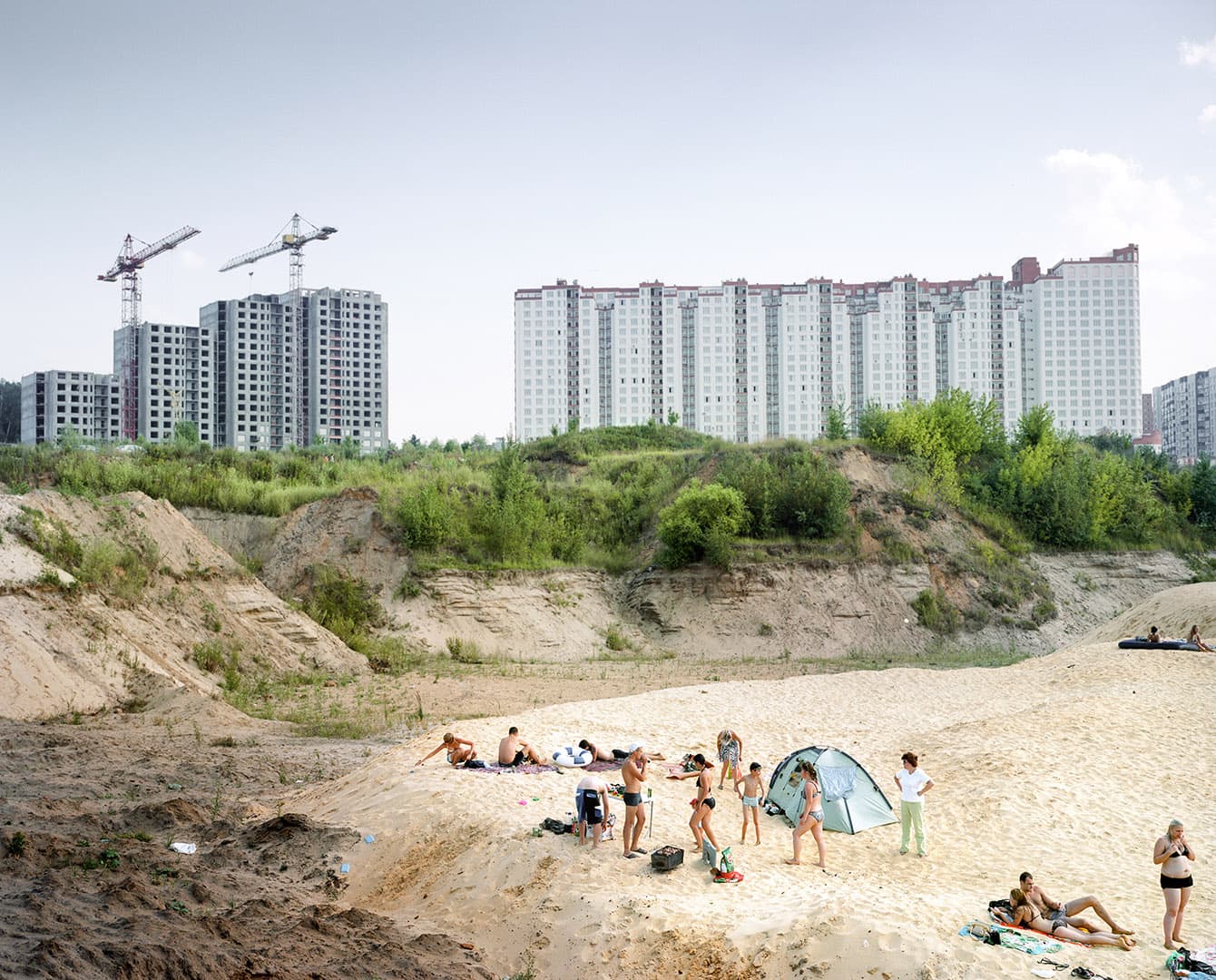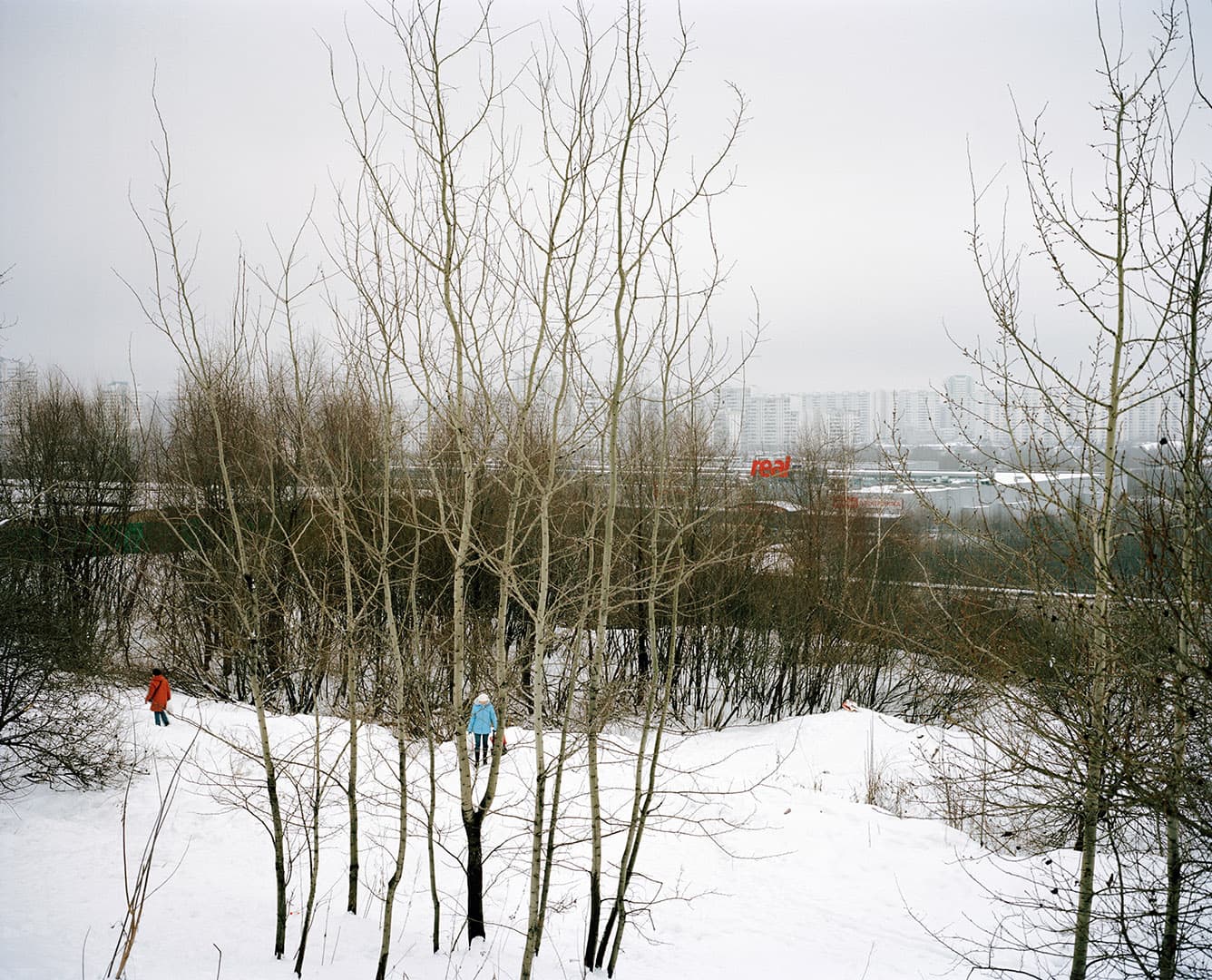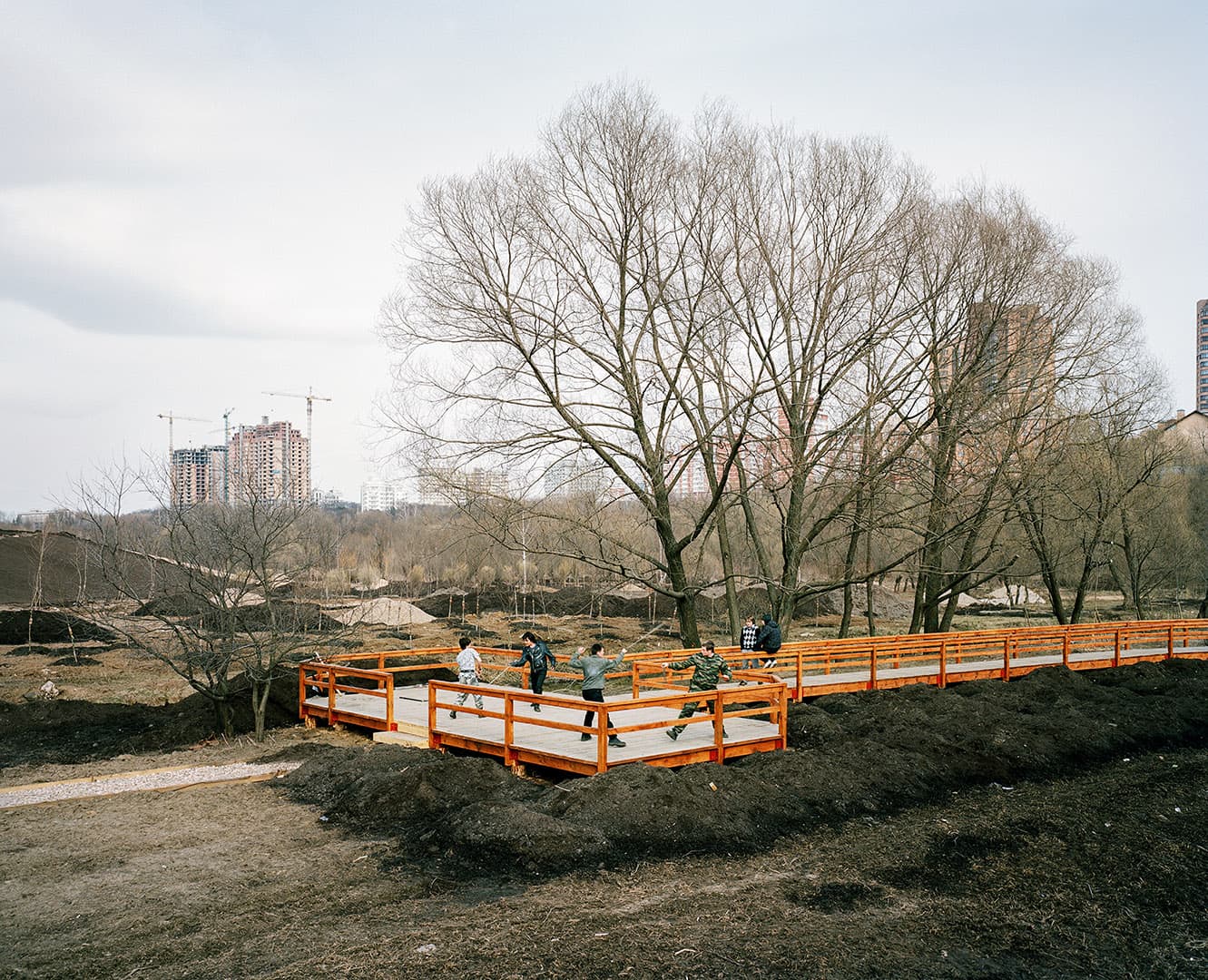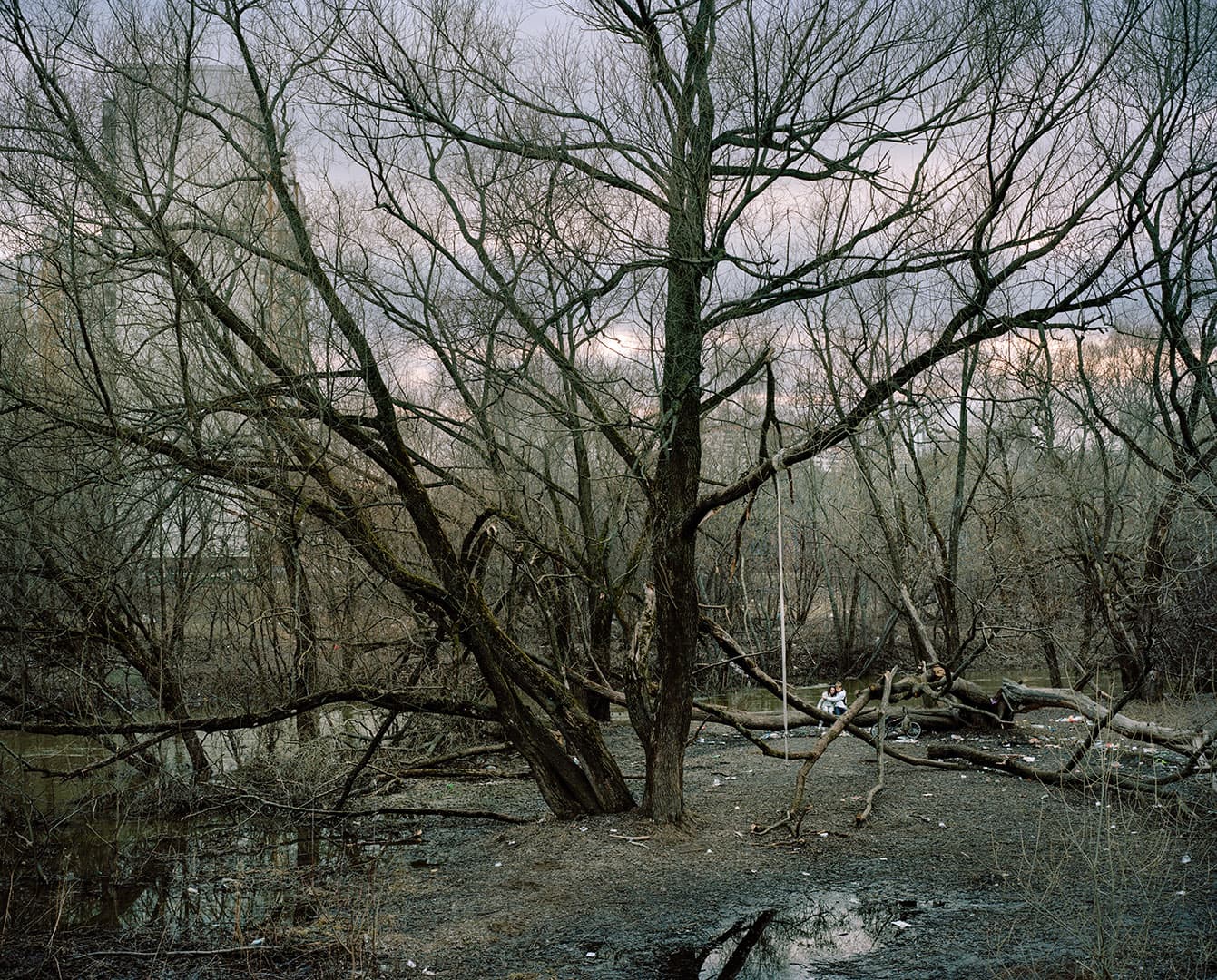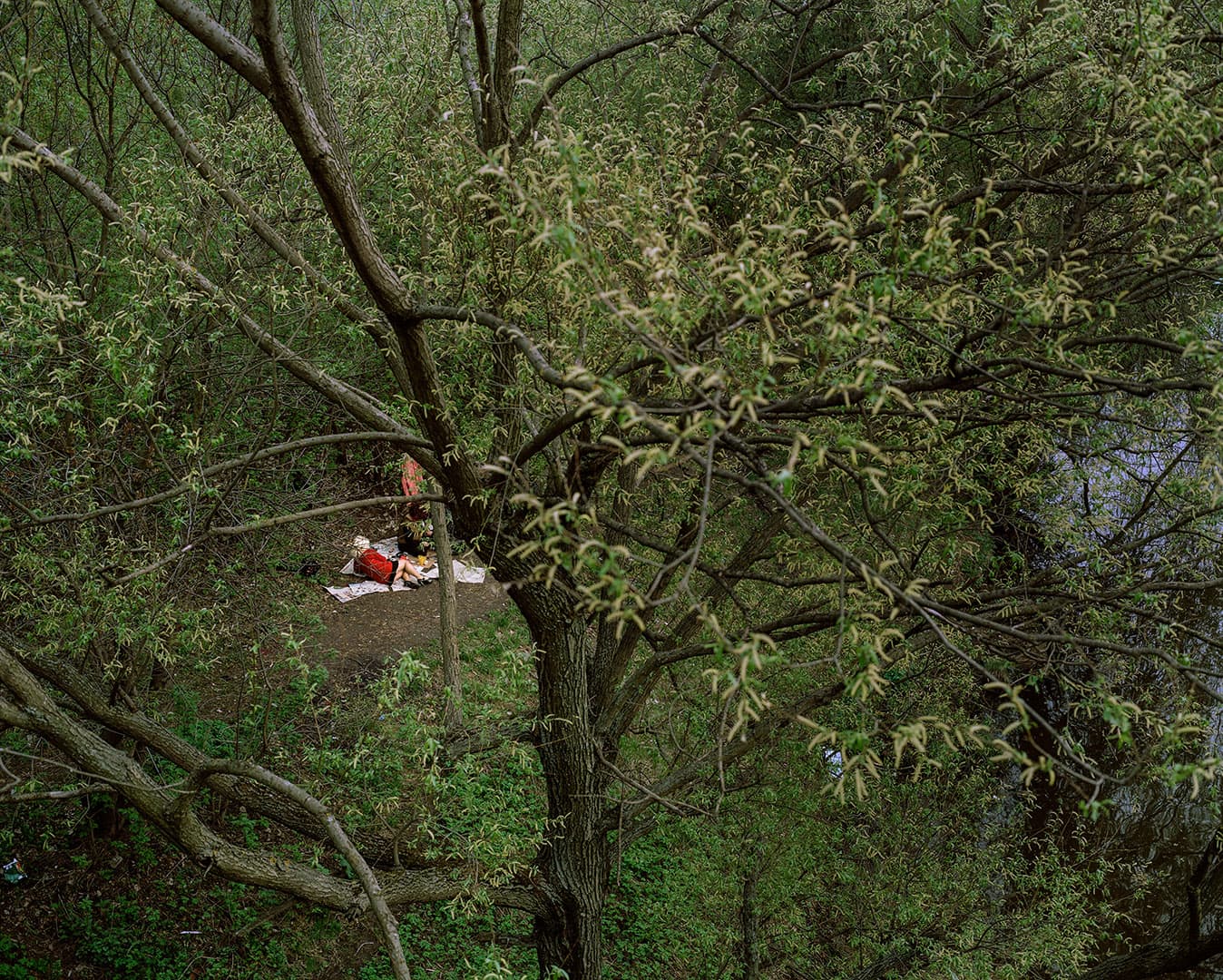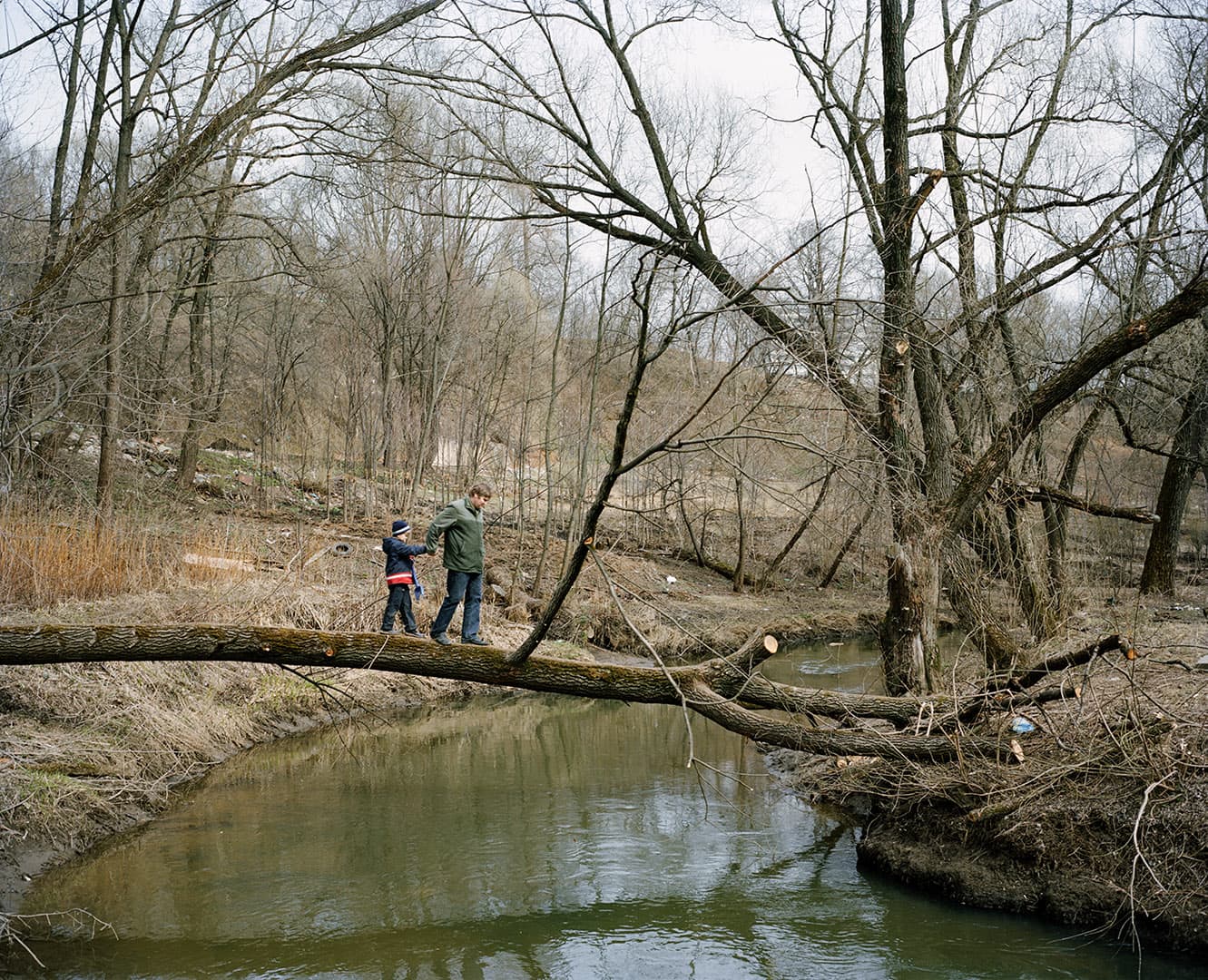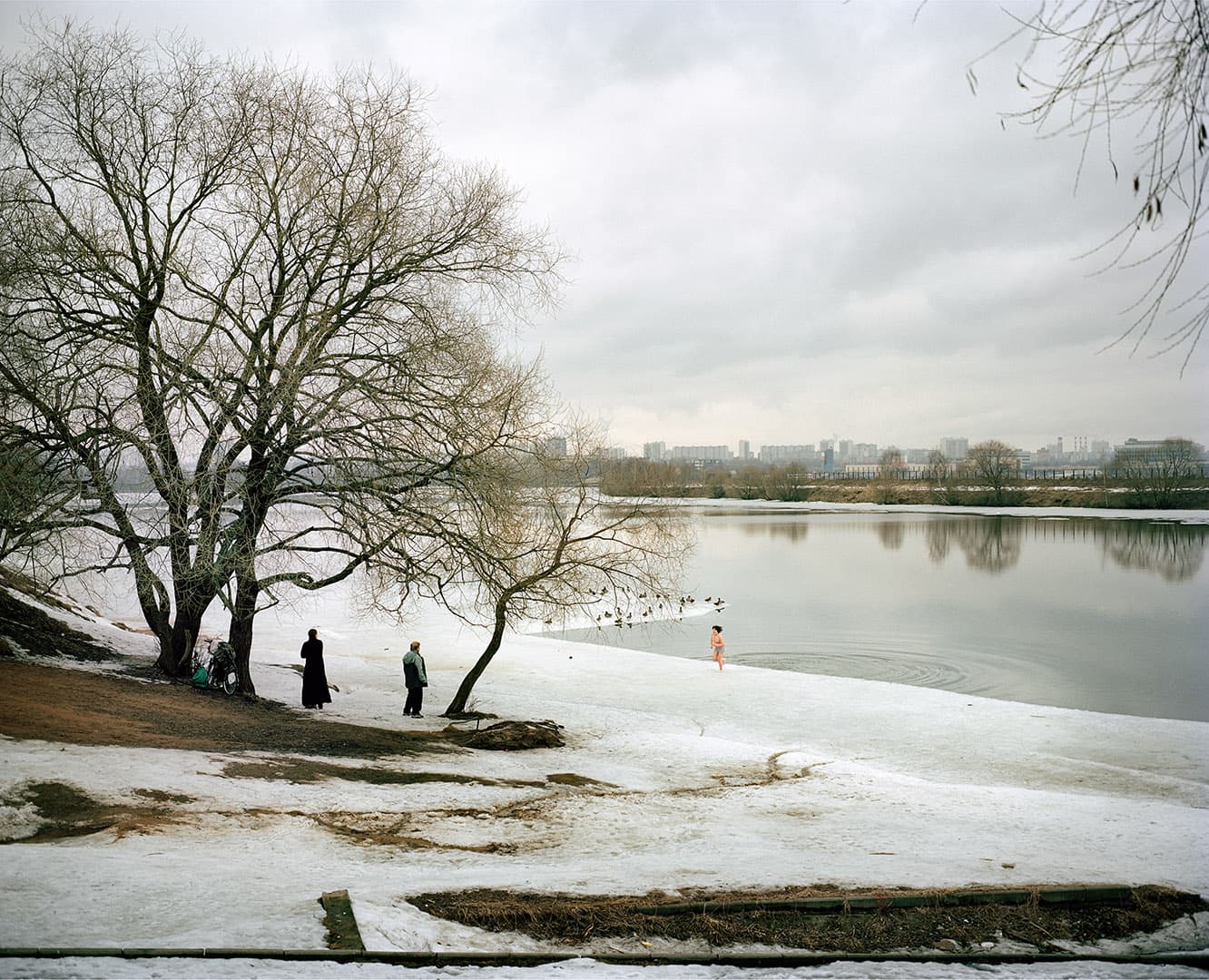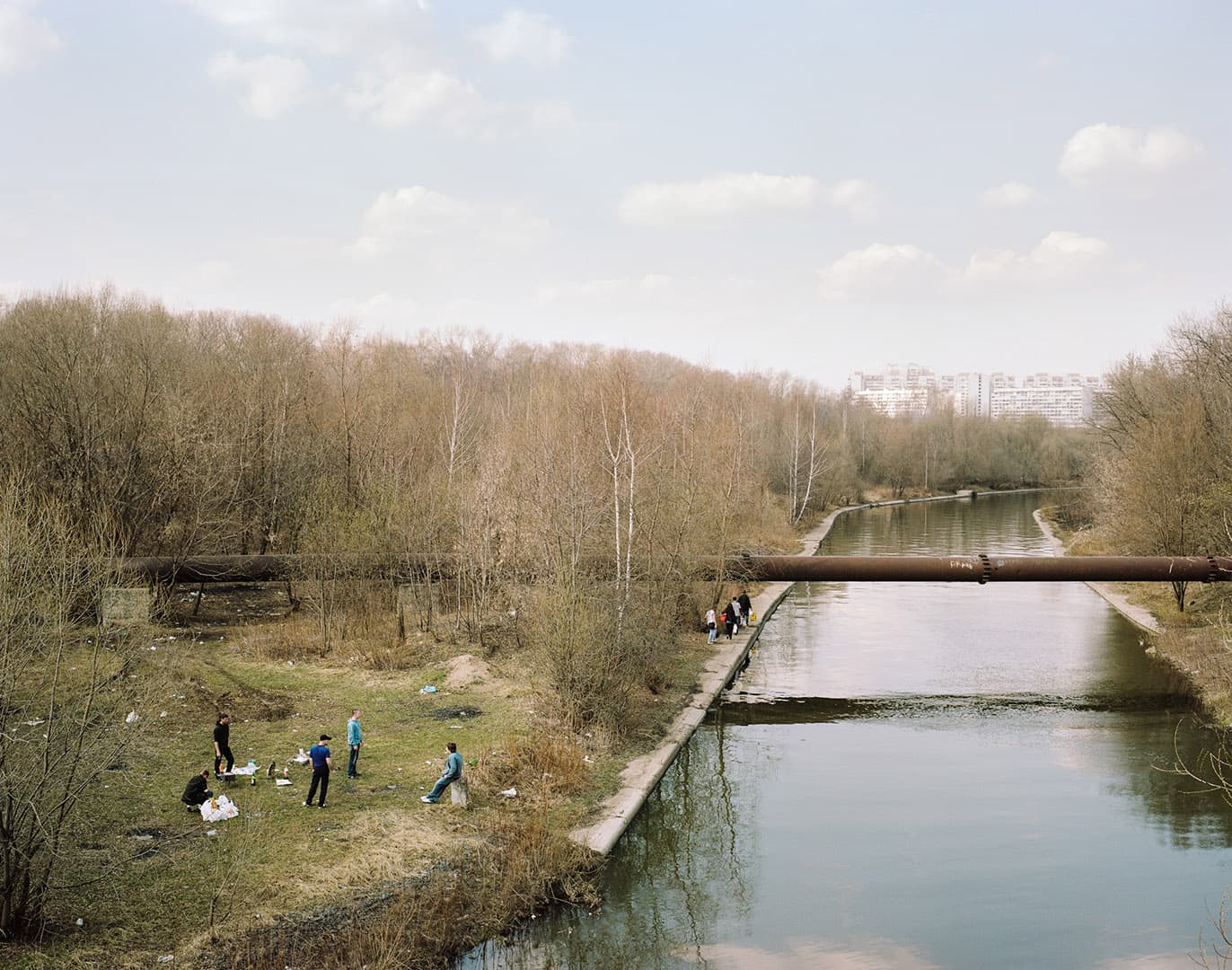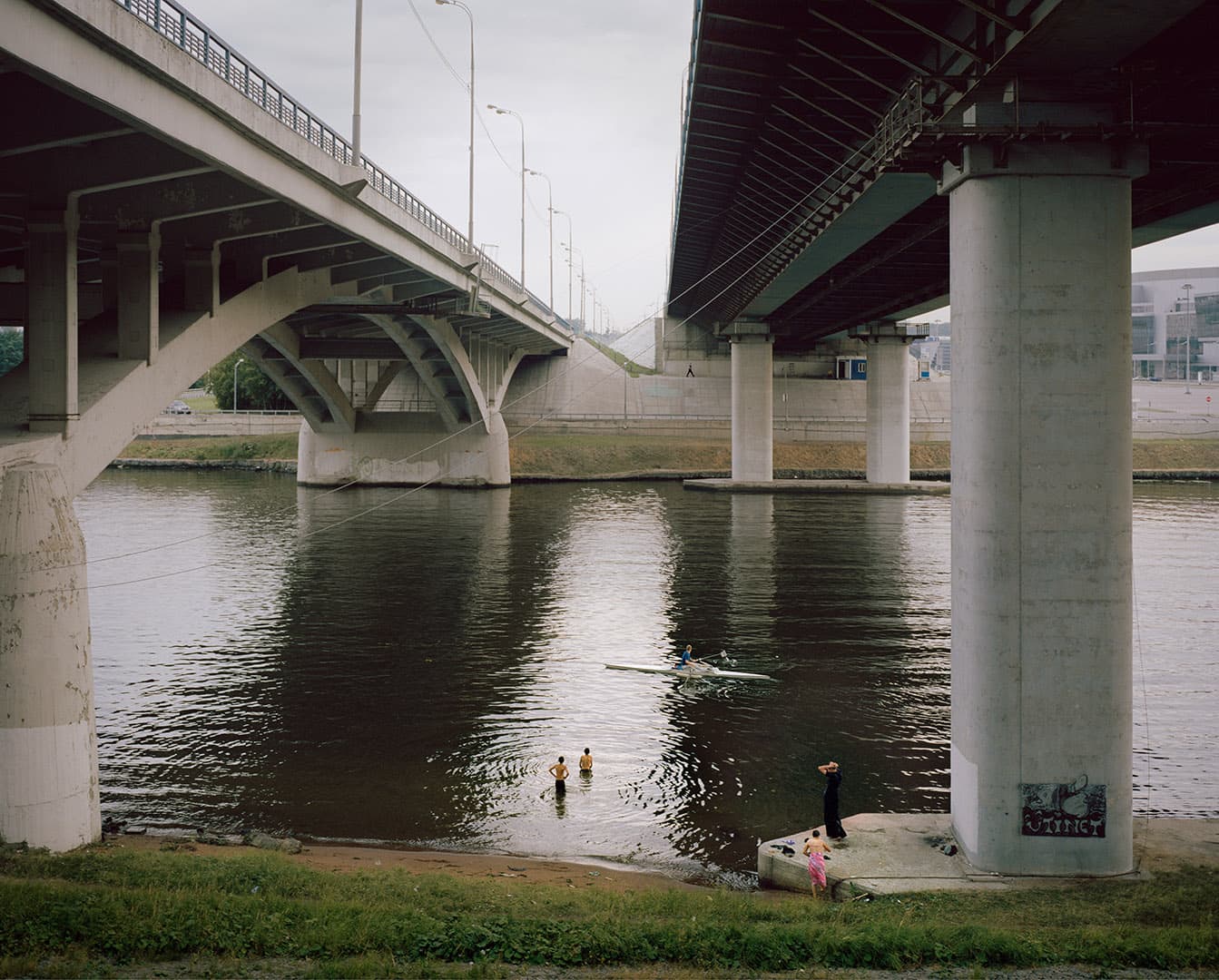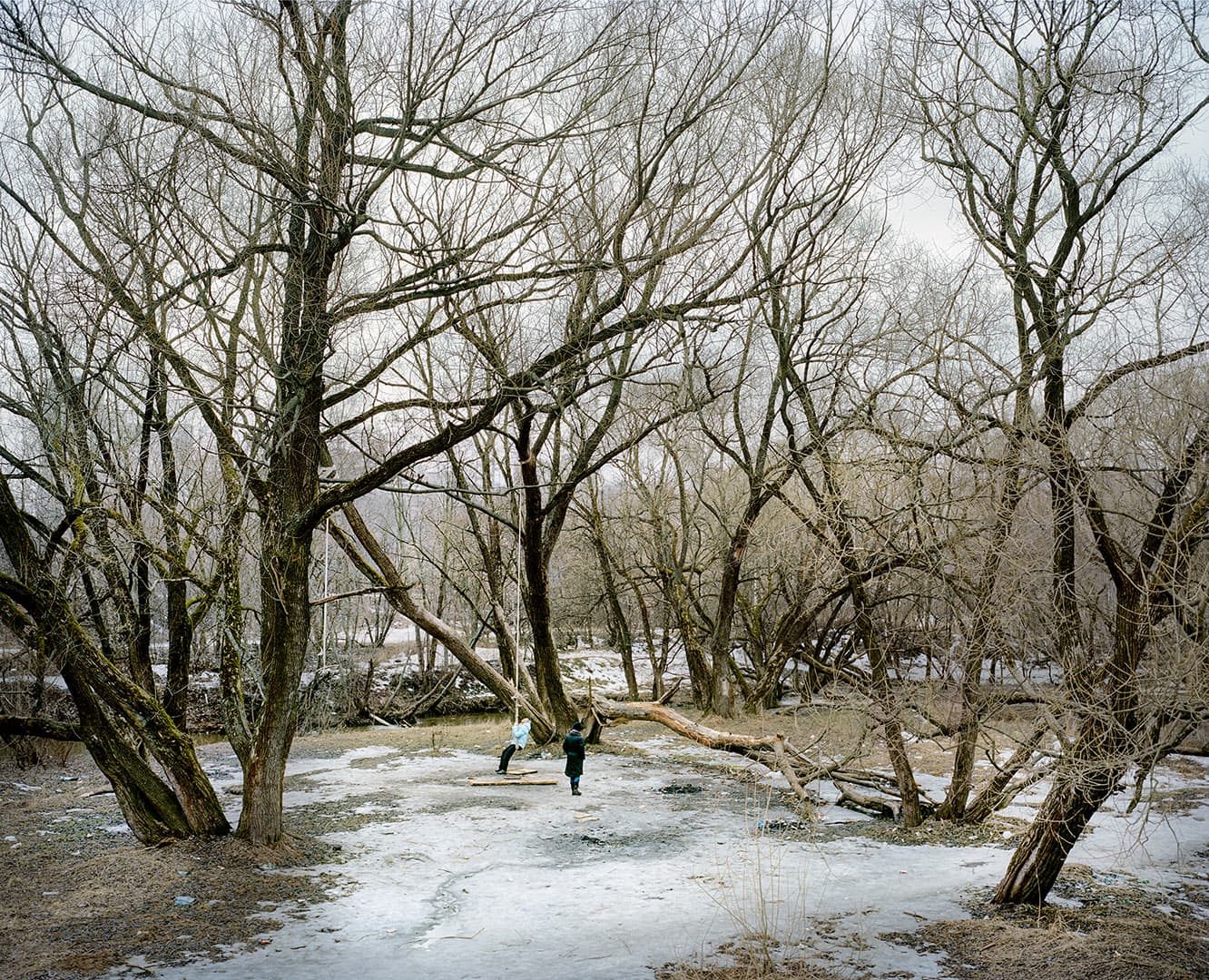GIVENESSE WITHOUT THE GIVEN
Text by Mikhail Iampolski
There was a time when photography showed us the vision, the forms of things. Irving Penn revealed the uniqueness of form in a cigarette butt, Edward Weston studied the forms of peppers, Ansel Adams examined the physiognomy of trees, the textures of cliffs and soil. The world was crystallized in things which had form, relief and texture. Since then, the photographic technique has been perfected, the defining abilities of the optics and media have increased. But the definiteness of the world no longer seems as achievable quite so unconditionally as before.
This new, more indefinite approach to the world can be clearly seen in the works of Alexander Gronsky, who specializes in photographing landscapes. The object of a landscape has always been harder to define than the object of a portrait, still-life or genre scene. The landscape does not itself show us a thing with clear outlines. The object of the landscape is crystallized by the choice of place and the composition -- hills, forest, town. Even on the thematic level, Gronsky avoids crystallization of the object. In the Pastoral cycle, [1] the photographer captures the intermediate zones between the metropolis of the Russian capital (Moscow) and nature, which has already vanished here. This is not the city, yet neither is it the countryside. These are a series of landscapes of the outskirts of the city, often taken from outside -- from the overgrown wastelands and rubbish dumps (no man’s lands) surrounding the town. The landscape is usually separated from the observer, who cannot enter it. Ernst Bloch has written that although the artist is included in the landscape, a dead space exists between him and the landscape: “...this curious gap always lies between subject and object of contemplation, precisely as dead space sui generis, from which the atmosphere of unmediated immediacy has not yet been sufficiently removed...” [2] This is a space in which directness and distantness have not yet entirely separated. The distantness of the landscape is usually linked to its ability to reveal to the viewer a self-enclosed aesthetic totality, i.e. something possessing form. In Gronsky’s cycle, however, this space between the photographer and the landscape is presented literally in the form of an intermediate zone of litter and indefiniteness, destroying the effect of the absolute autonomy of the visible. This is a place where the landscape has still not completely separated from the observer. The photograph has still not crystallised into an aesthetic wholeness possessing form and is only in the process of its gradual autonomization, in the process of appearing to the viewer.
With their clear geometric forms, the buildings in Gronsky’s cityscapes appear to differ greatly from the intermediate zone. Their role is to mark out the border between the space of desolation and the space of habitation. Yet this does not happen. The new blocks of houses are already subjected to the corrosion of time and covered in indentations; they appear to be the abandoned, albeit not yet destroyed “ruins” of modernity. Gronsky’s cities are often completely empty, while the wasteland and rubbish dumps around them are inhabited, as if the people have relocated from the zones of cleanliness and habitation to the zones of sewage and decay. The people in Gronsky’s photographs are, in essence, indiscernible from the refuse. They often potter around in the dirt and are virtually always presented in the form of figures so miniature that they turn into a small, insignificant detail -- just as incidental as the surrounding rubbish.
Gronsky’s objects do not have distinct forms. At the same time, the quality of the photographic vision presented in these works is extremely high. The artist scrupulously selects the point of view, ideally balances the composition, meticulously works out every detail and subtly harmonizes the colour gamut, attempting to avoid superfluous colour contrasts not easily integrated into the whole. There is nothing accidental or improvised in these landscapes. Although the objects are quite ugly and formless, Gronsky’s landscapes are, in terms of classical aesthetics, extremely beautiful. The poetics of his works can be described as refined formalism addressed to formless objects.
From the point of view of modern philosophy, Gronsky’s photography slots into the tradition of the critique of the metaphysics of presence, something often attributed to photography (for example, with Roland Barthes -- a person is no longer alive, he has long since died, yet here he is in the photograph looking into our eyes; he does not exist, but is present here). Gronsky’s objects appear to be right here, in front of us, yet there is no unequivocal presence of the thing in them. This is the cardinal difference between Gronsky and Andreas Gursky, with whom he is sometimes compared and does indeed have a certain stylistic similarity. In Gursky’s works, everything is subordinated to the imperative of presence. The world of this photographer is the world of the superfluity of things, crossing over into the monotony of a constantly renewed motif. Everything is completely different with Gronsky. The time of his landscapes is undefined -- and not only the time of day (meaning when the photograph was taken), but also time in the broader sense of the word. The effect of indefiniteness is particularly underscored by the desolation of the spaces. If life spreads here, outwardly from the city, why are the new constructions so desolated, as if the population has already abandoned them? Hence the ambivalence of the temporality: is this an end time or a beginning time? It is clearly not the time of the current moment. The disappearance of the “sense of the moment” paradoxically weakens the indexicality of the images, which break away from the circumstances of their production.
Likewise, the inadequate nature in the outskirts does not achieve the intensity of presence. It is fascinating to compare Gronsky’s nature to that of another, stylistically similar photographer -- Peter Bialobrzeski, who created the remarkable Eden cycle of works, in which high urban buildings are visible through the thick foliage of dense vegetation, forming a wall akin to the walls of modern high-rise structures. In Bialobrzeski’s works, we have a literal blocking of the view, its oversaturation. Gronsky’s Pastoral not only has the paradisiacal fullness of Bialobrzeski’s photographs; his Arcadia recalls the Arcadia of Polybius, who was born in this mythological, idyllic land and wrote about the “hardship of the men’s lives, as well as the harshness of character resulting from the cold and gloomy atmospheric conditions usually prevailing in these parts” (Book IV, 21.1). [3] Writing with regard to such a gloomy vision of the pastoral age, Erwin Panofsky mentions a special “‘hard’ form of primitivism,” which “conceives of primitive life as an almost subhuman existence full of terrible hardships and devoid of all comforts in other words, as civilized life stripped of its virtues.” [4] What we have here is not the nature of paradise, but nature following the expulsion from paradise, nature only vaguely recalling the intensity of its lost presence.
In these photographs, the phenomenality of the world also separates from the contemplation and presence of things. Here we encounter what French philosopher Jean-Luc Marion called “givenness.” The givenness spreads not only onto things, but also onto the non-existent, such as, for example, pictures or photographs. For a photograph to be perceived as such, it must cease to be perceived as a thing in its concrete materiality. Marion writes that a picture -- this also relates to a photograph -- “remains indifferent to its character as thing. Not only because it does not depend on its subsisting in a support... but because it itself supports the proliferation of its supports. That is, the painting, as appearing, remains perfectly indifferent to the ontic conditions of this apparition, since it appears (at least by right, if not also in fact) with the same originality in its reproductions... The painting (the work) remains the same, whether the thinglike support disappears (restoration) or proliferates (reproduction).” [5] The givenness of the picture is not in its thinglike manifestation, its materiality, but in the fact that it presents itself to our view, draws it towards itself, in its ability to appear and arise, separating from the material medium. The transitional zones in Pastoral are such spaces of gradual separation, the loss of form and the autonomization of the subject from the object.
But while Jean-Luc Marion’s words can be wholly applied to painting, photography is traditionally more closely connected (via the indexicality of its nature) to the materiality of the world. Gronsky casts doubt on this connection -- without, however, making, his photographs abstract. On the contrary, he takes their texturality to the point of such tactile tangibility that the objects as such disappear in the web of the traces they have left behind. In his works, the accumulation of optic traces of the world occurs in parallel to the growth of rubbish dumps and scrapyards on the outskirts of the cities, where the traces of time appear as formless waste. The greater the traces of the past, the less forms we encounter in the world. The disappearance of the objects and forms is accompanied by a formal perfectionism in which photography increasingly acquires the qualities of Marion’s givenness, pure visibility without the object.
One of Gronsky’s best series, Mountains & Waters, was created in China under the powerful influence of Chinese painting. The format of the photographs imitates a scroll, slashed in the middle, in order to impart the customary format of a European picture to the horizontally extending Chinese landscape. This strange extendedness and simultaneous slicing of the image organizes the transition from the classical composition of the rectangle familiar in the West to a space not possessing centration and destabilizing the perspective. This decentration of the composition is superimposed on the fluidity of the water and silhouettes of cliffs in the Chinese landscape, about which French philosopher François Jullien said that the most important thing was not conveying the visibility of things, but their “desubstantivation,” the elimination of their materiality. A Chinese painter does not depict water or a hill as forms, as objects possessing a steadfast existence, but as sources of tension, stimuli for the transition from substances to emotion. Jullien writes about the special level of consciousness set in motion here: “...a level of consciousness different from that on which the logical signification codified in analogy is formed: it issues from an unmediated encounter between the ‘I’ and the world and is therefore situated on a higher level of semantic irrelevance. On this level the ‘I’ and the world are caught in a common vacillation. Perception is at the same time emotion; nothing is objective: there is meaning, but it cannot be codified; it is infinitely vague and diffuse.” [6]
In Gronsky’s photographs, like in a classical Chinese landscape, the objects do not crystallize into forms perceived in concepts or logical chains. The objects cannot be read as individual elements. They enter into the experience of the givenness, the appearance, the revelation of the world which has directly resonated with the viewer’s consciousness. Herein lies the remarkable ability of Gronsky’s photographs to reveal a sharpness of vision without distinct objects of perception, a vision evoking in the viewer, despite all the apparent alienation, coldness and consideredness of the image, an extraordinarily powerful emotional response. Art critic Alexander Yevangeli has written, in connection with Gronsky, about the dehumanization of photography and the “subtraction of the human” in his works. The cold perfection of Gronsky’s works would seem to invite this evaluation of his view of the world, particularly as the people in his photographs are tiny figures who hardly stand out from the landscape and do not possess any independent significance. Gronsky’s view can be easily identified with a totally technological perception of the world. This “subtraction of the human,” the vanishing of the subject, the facelessness of the vision are linked to the disappearance of the “object” and the view’s loss of any intentional orientation on it. And herein lies the paradox of Gronsky’s photographs. Eliminating objects and the distinct “orientation on...”, the vision enters, of its own accord, into an unusually intense relationship with the world in all its indefiniteness and fullness. And it is this intensity of the givenness which charges the photographs with such a high emotional potential, something conventional humanist works do not often have.
Pastoral is a series of enchanting landscapes in which there is virtually nothing to look at. What we have here is givenness without the given. Notwithstanding all their hallucinatory concreteness, Gronsky’s photographs belong far more to the plane of pure vision, appearance and apparition than to the field of the materiality of the presented objects. And this is their undoubted contemporaneousness and strength.
- The title of the cycle is ironic. A pastoral always depicts a rural idyll, in contrast to the life of city dwellers, to whom it is addressed. In Gronsky’s cycle, the cardinal difference between the rural, the natural and the urban is lifted. This particular pastoral is not about a contrast, but about an indefinite transition.
- Ernst Bloch, The Principle of Hope, Vol. 1, Cambridge, Mass.: The MIT Press, 1986, pp. 296-297.
- Polybius, The Histories in Six Volumes, Vol. 2, Cambridge, Mass.: Harvard University Press/London: William Heinemann Ltd., 1979, p. 351.
- Erwin Panofsky, Meaning in the Visual Arts, Garden City: Doubleday, 1955, p. 297.
- Jean-Luc Marion, Being Given: Toward a Phenomenology of Givenness, Stanford: Stanford University Press, 2002, pp. 46-47.
- François Jullien, Detour and Access: Strategies of Meaning in China and Greece, New York: Zone Books, 2000, p. 151.

